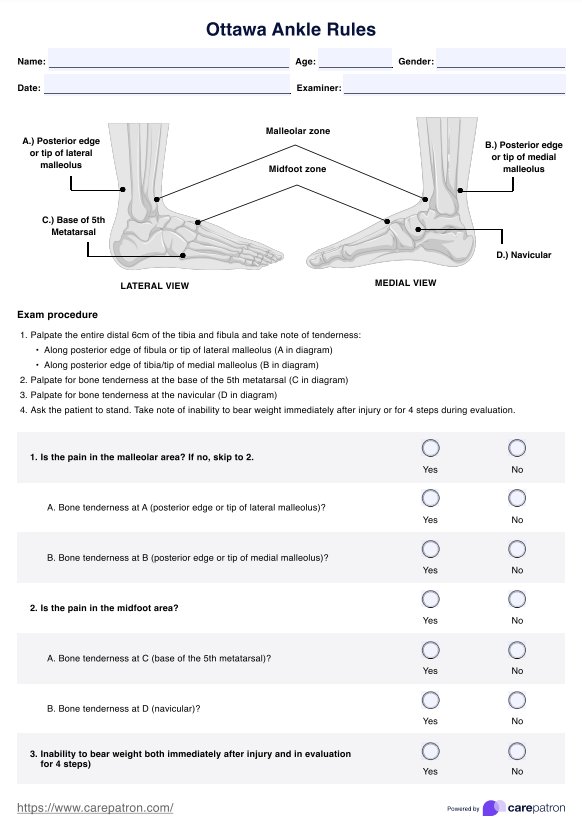While there isn’t a universally recognized mnemonic, some clinicians remember "44-55-66-PM", which helps you remember the criteria that indicate a need for imaging. "44" stands for inability to bear weight for 4 steps immediately after the injury and 4 steps in the clinical setting; "55" is for bone tenderness at the base of the 5th metatarsal and at the navicular bone; and "66" is for bone tenderness along the posterior edge of both the lateral and medial malleoli, typically assessed over 6 cm.

Ottawa Ankle Rules
Use the Ottawa Ankle Rules to decide whether your patients' ankle and foot injuries need imaging. Try our template today!
Ottawa Ankle Rules Template
Commonly asked questions
They include five key criteria: bone tenderness at the posterior edge or tip of the lateral malleolus, bone tenderness at the posterior edge or tip of the medial malleolus, bone tenderness at the base of the 5th metatarsal, bone tenderness at the navicular bone, and inability to bear weight immediately and in the emergency department for four steps. Radiographic imaging is usually indicated if these criteria are met within their respective zones (malleolar or midfoot).
If a patient cannot bear weight both immediately after the injury and for four steps during evaluation, this finding typically indicates a higher likelihood of fracture and signals the need for radiographic imaging. This weight-bearing criterion helps identify significant injuries that conservative management might otherwise overlook.
EHR and practice management software
Get started for free
*No credit card required
Free
$0/usd
Unlimited clients
Telehealth
1GB of storage
Client portal text
Automated billing and online payments











